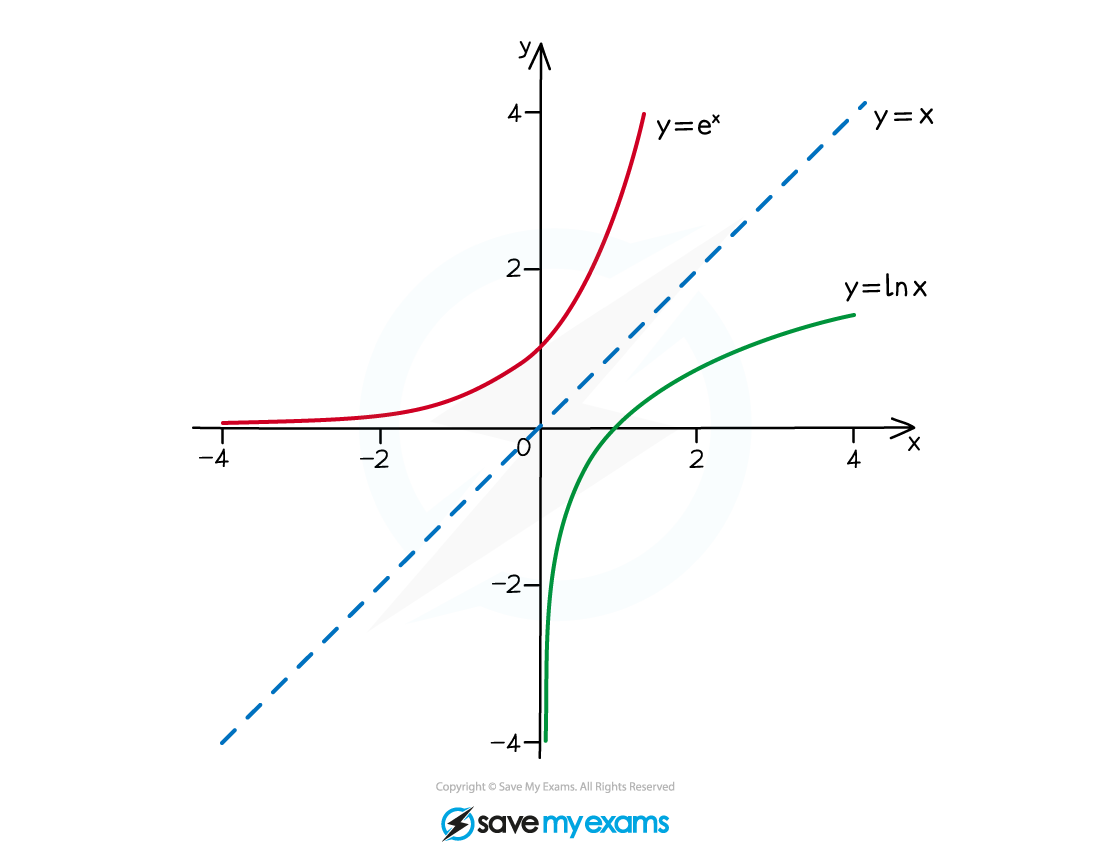Composite & Inverse Functions (DP IB Analysis & Approaches (AA)) : Revision Note
Did this video help you?
Composite Functions
What is a composite function?
A composite function is where a function is applied to another function
A composite function can be denoted
The order matters
means:
First apply g to x to get
Then apply f to the previous output to get
Always start with the function closest to the variable
is not usually equal to
How do I find the domain and range of a composite function?
The domain of
is the set of values of
...
which are a subset of the domain of g
which maps g to a value that is in the domain of f
The range of
is the set of values of
...
which are a subset of the range of f
found by applying f to the range of g
To find the domain and range of
First find the range of g
Restrict these values to the values that are within the domain of f
The domain is the set of values that produce the restricted range of g
The range is the set of values that are produced using the restricted range of g as the domain for f
For example: let
and
The range of g is
Restricting this to fit the domain of f results in
The domain of
is therefore
These are the values of x which map to
The range of
is therefore
These are the values which f maps
to
Examiner Tips and Tricks
Make sure you know what your GDC is capable of with regard to functions
You may be able to store individual functions and find composite functions and their values for particular inputs
You may be able to graph composite functions directly and so deduce their domain and range from the graph
is not the same as
Worked Example
Given and
:
a) Write down the value of .

b) Write down an expression for .

c) Write down an expression for .

Did this video help you?
Inverse Functions
What is an inverse function?
Only one-to-one functions have inverses
A function has an inverse if its graph passes the horizontal line test
Any horizontal line will intersect with the graph at most once
The identity function
maps each value to itself
If
and
have the same effect as the identity function then
and
are inverses
Given a function
we denote the inverse function as
An inverse function reverses the effect of a function
means
Inverse functions are used to solve equations
The solution of
is
A composite function made of
and
has the same effect as the identity function

What are the connections between a function and its inverse function?
The domain of a function becomes the range of its inverse
The range of a function becomes the domain of its inverse
The graph of
is a reflection of the graph
in the line
Therefore solutions to
or
will also be solutions to
There could be other solutions to
that don't lie on the line

How do I find the inverse of a function?
STEP 1: Swap the x and y in
If
then
STEP 2: Rearrange
to make
the subject
Note this can be done in any order
Rearrange
to make
the subject
Swap
and
Examiner Tips and Tricks
Remember that an inverse function is a reflection of the original function in the line
Use your GDC to plot the function and its inverse on the same graph to visually check this
is not the same as
Worked Example
For the function :
a) Find the inverse of .

b) Find the domain of .

c) Find the value of such that
.


You've read 0 of your 5 free revision notes this week
Unlock more, it's free!
Did this page help you?
